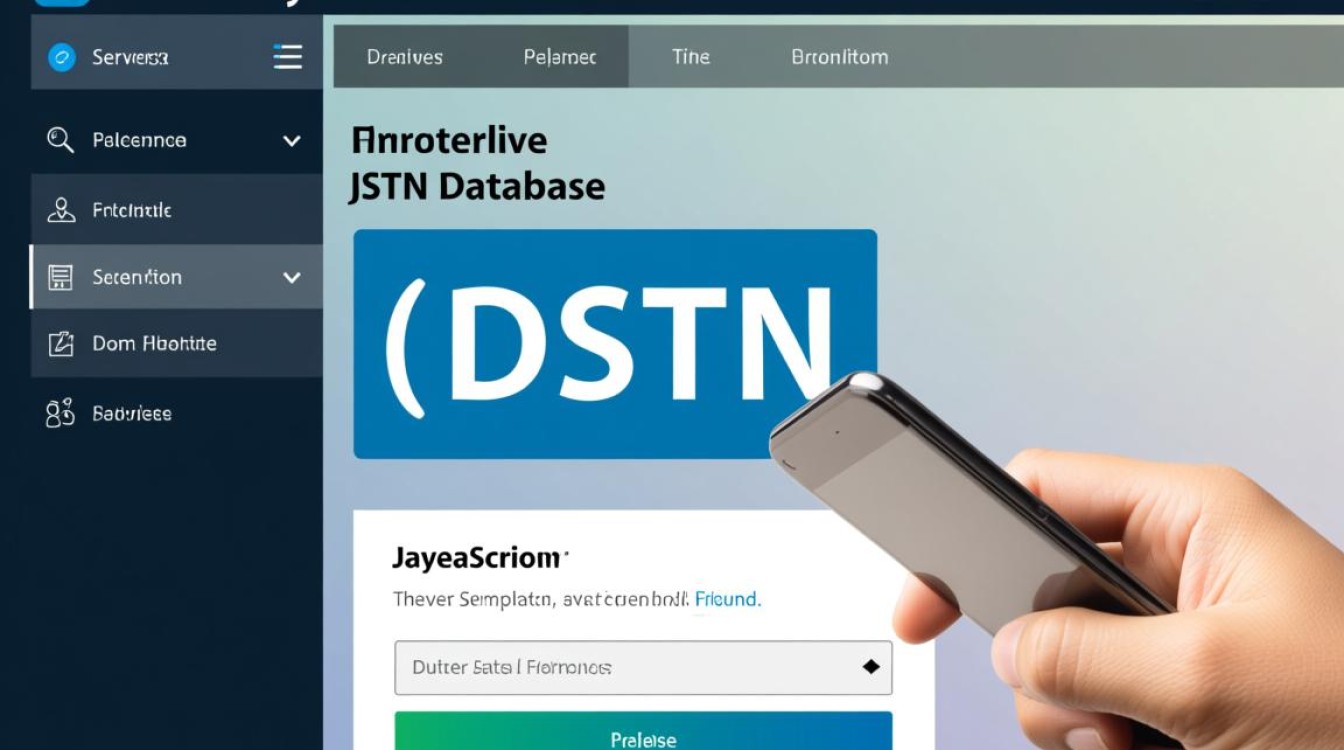在前端开发中,获取JSON数据库是常见的需求,通常涉及从服务器端获取数据并在前端进行解析和展示,JSON(JavaScript Object Notation)因其轻量级、易读性和与JavaScript的天然兼容性,成为前后端数据交互的主流格式,本文将系统介绍前端获取JSON数据的多种方式、技术细节及最佳实践,帮助开发者高效实现数据交互。

通过HTTP请求获取JSON数据
前端获取JSON数据最核心的方式是通过HTTP请求与服务器通信,现代浏览器提供了多种API支持异步请求,其中最常用的是Fetch API和XMLHttpRequest(XHR)。
使用Fetch API
Fetch API是现代浏览器推荐的标准接口,基于Promise设计,语法简洁且功能强大,基本使用步骤如下:
- 发起请求:通过
fetch()方法指定URL,默认发起GET请求。fetch('https://api.example.com/data') .then(response => response.json()) // 解析JSON数据 .then(data => console.log(data)) .catch(error => console.error('Error:', error)); - 处理响应:
fetch()返回的Promise解析为Response对象,需调用json()方法将响应体解析为JSON对象,注意,即使HTTP状态码为404或500,fetch()也不会直接抛出错误,需通过response.ok或response.status判断请求是否成功。 - 配置选项:可通过第二个参数配置请求方法、 headers、 body等。
fetch('https://api.example.com/data', { method: 'POST', headers: { 'Content-Type': 'application/json' }, body: JSON.stringify({ key: 'value' }) });
使用XMLHttpRequest
XHR是较早期的异步请求技术,兼容性更好,但语法相对繁琐,基本流程如下:
const xhr = new XMLHttpRequest();
xhr.open('GET', 'https://api.example.com/data');
xhr.setRequestHeader('Content-Type', 'application/json');
xhr.onload = function() {
if (xhr.status === 200) {
const data = JSON.parse(xhr.responseText);
console.log(data);
}
};
xhr.send();
处理跨域请求
由于浏览器的同源策略,前端页面无法直接向不同源的服务器发起请求,解决跨域问题的主要方案包括:
CORS(跨域资源共享)
服务器通过设置HTTP响应头允许跨域请求,服务器返回以下头信息:

Access-Control-Allow-Origin: *
Access-Control-Allow-Methods: GET, POST, PUT, DELETE
Access-Control-Allow-Headers: Content-Type前端无需额外配置,直接发起请求即可,开发中可通过代理服务器(如Nginx、CORS Anywhere)或后端接口配合实现。
JSONP(仅适用于GET请求)
JSONP通过动态创建<script>标签绕过跨域限制,但要求服务器支持JSONP回调。
function handleResponse(data) {
console.log(data);
}
const script = document.createElement('script');
script.src = 'https://api.example.com/data?callback=handleResponse';
document.body.appendChild(script);
本地存储与模拟数据
在开发或离线场景中,可通过本地存储或静态文件模拟JSON数据:
使用本地JSON文件
将JSON文件置于项目public或static目录下,通过相对路径直接访问:
fetch('/data.json')
.then(response => response.json())
.then(data => console.log(data));
浏览器本地存储
通过localStorage或sessionStorage存储JSON数据,适合缓存或离线使用:

// 存储
localStorage.setItem('userData', JSON.stringify({ name: 'John' }));
// 读取
const userData = JSON.parse(localStorage.getItem('userData'));
前端框架与数据获取
现代前端框架(如React、Vue)提供了封装好的数据获取机制,简化开发流程:
React中的数据获取
- 生命周期方法:在
componentDidMount中调用fetch:class MyComponent extends React.Component { componentDidMount() { fetch('https://api.example.com/data') .then(response => response.json()) .then(data => this.setState({ data })); } render() { return <div>{this.state.data?.name}</div>; } } - Hooks:使用
useEffect和useState:const [data, setData] = useState(null); useEffect(() => { fetch('https://api.example.com/data') .then(response => response.json()) .then(setData); }, []);
Vue中的数据获取
- Options API:在
created或mounted钩子中请求:export default { data() { return { items: [] }; }, created() { fetch('https://api.example.com/data') .then(response => response.json()) .then(data => this.items = data); } }; - Composition API:使用
ref和onMounted:import { ref, onMounted } from 'vue'; export default { setup() { const items = ref([]); onMounted(() => { fetch('https://api.example.com/data') .then(response => response.json()) .then(data => items.value = data); }); return { items }; } };
错误处理与性能优化
- 错误处理:始终捕获请求异常,处理网络错误或解析失败:
fetch('https://api.example.com/data') .then(response => { if (!response.ok) throw new Error('Network response was not ok'); return response.json(); }) .catch(error => console.error('Fetch error:', error)); - 性能优化:使用
debounce或throttle控制请求频率,通过Cache-Control头或Service Worker缓存数据,减少重复请求。
FAQs
Q1:为什么fetch请求在HTTP状态码为404时不会进入catch块?
A:Fetch API仅在网络请求失败(如无网络连接)时才会触发catch,对于HTTP错误状态码(如404、500),需通过response.ok或response.status手动判断,
fetch('https://api.example.com/data')
.then(response => {
if (!response.ok) {
throw new Error(`HTTP error! status: ${response.status}`);
}
return response.json();
});
Q2:如何解决CORS预检请求(OPTIONS)导致的跨域问题?
A:CORS预检请求针对复杂请求(如非GET/POST方法、自定义headers),解决方案包括:
- 后端正确配置
Access-Control-Allow-Methods和Access-Control-Allow-Headers; - 后端对OPTIONS请求直接返回204状态码,不处理实际业务逻辑;
- 前端避免发送不必要的复杂请求,或使用代理服务器(如Vue CLI的
proxy配置)绕过跨域。